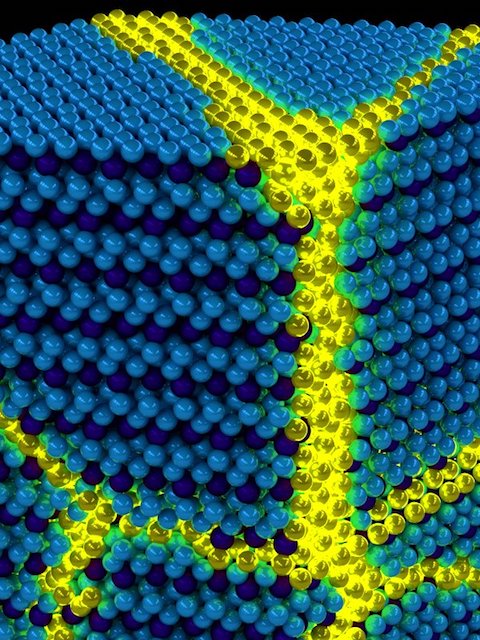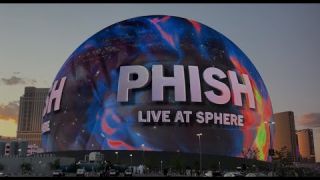 Artist's depiction of the collective excitons of an excitonic solid. These excitations can be thought of as propagating domain walls (yellow) in an otherwise ordered solid exciton background (blue). Credit: Peter Abbamonte, U. of I. Department of Physics and Frederick Seitz Materials Research Laboratory
Artist's depiction of the collective excitons of an excitonic solid. These excitations can be thought of as propagating domain walls (yellow) in an otherwise ordered solid exciton background (blue). Credit: Peter Abbamonte, U. of I. Department of Physics and Frederick Seitz Materials Research Laboratory
Dec. 8, 2017 (Phys.org) -- Excitonium has a team of researchers at the University of Illinois at Urbana-Champaign... well... excited!
Professor of Physics Peter Abbamonte and graduate students Anshul Kogar and Mindy Rak, with input from colleagues at Illinois, University of California, Berkeley, and University of Amsterdam, have proven the existence of this enigmatic new form of matter, which has perplexed scientists since it was first theorized almost 50 years ago.
The team studied non-doped crystals of the oft-analyzed transition metal dichalcogenide titanium diselenide (1T-TiSe2) and reproduced their surprising results five times on different cleaved crystals. University of Amsterdam Professor of Physics Jasper van Wezel provided crucial theoretical interpretation of the experimental results.
So what exactly is excitonium?
Excitonium is a condensate -- it exhibits macroscopic quantum phenomena, like a superconductor, or superfluid, or insulating electronic crystal. It's made up of excitons, particles that are formed in a very strange quantum mechanical pairing, namely that of an escaped electron and the hole it left behind.
It defies reason, but it turns out that when an electron, seated at the edge of a crowded-with-electrons valence band in a semiconductor, gets excited and jumps over the energy gap to the otherwise empty conduction band, it leaves behind a "hole" in the valence band. That hole behaves as though it were a particle with positive charge, and it attracts the escaped electron. When the escaped electron with its negative charge, pairs up with the hole, the two remarkably form a composite particle, a boson -- an exciton.
(more)
READ MORE: Phys.org











